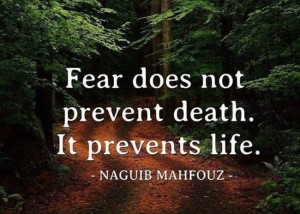
By: Thomas Signorello March 3, 2017
LinkedIn is kind of a different social media platform – don’t you think? It’s a little tricky to use, and can be much, much harder to build relationships on than, say Facebook. It does have lots of great features, but it’s not as intuitive or as easy to integrate as some of the other social networks.
However, LinkedIn holds a high place of distinction, and if that’s where your target market is hanging out, you’d better be there, too! To make it worth your while, you need to make sure you have an engaging, informative, effective LinkedIn profile. Here are some easy steps to make that happen:
1. Before you even look at your profile, take time to properly clarify WHO you’re writing to, and decide specifically WHAT you want people to take from it. Writing general “blah blah blah” is not going to help you stand out. You want to know exactly who you’re talking to, and what you have to offer them.
2. Research your keywords and keyword phrases, and use them in each section of your profile whenever you can. You don’t want your page to sound like one of those keyword-rich article marketing articles, but you do need keywords in each section so people can find you quickly.
3. With that in mind, create a clear headline and summary: who you are, who you help, and how you help them. Keep it clear and concise and use your best keywords.
4. Use a professional photo that represents what you do. Make sure you’re face is big enough that people can see it clearly, and keep the background distractions to a minimum.
5. When it comes to listing your websites, instead of choosing “Blog” or “Company Website,” choose “Other” and give your websites a title that uses your keywords.
6. If you have an active, useful Twitter account, connect it to LinkedIn here. The more ways you can connect with someone, the better.
7. Create a powerful summary. This is achieved by writing in the first person, to the specific person you’re talking to, in a conversational tone that creates an opportunity for conversation. You need to identify your prospect’s pain and show them how you can solve it. You also need to explain how you are unique and different, and perfectly suited for your prospect’s needs. Make sure you create a clear call-to-action, and put your contact information in the summary with a gentle teaser-type headline: “To boost your sales by 30% in 10 days, contact me at: 123-456-7890″ for example.
8. Create your LinkedIn URL. LinkedIn automatically assigns you a random URL. This is ugly and hard to remember. It also looks bad on a business card. Just click “edit” by the assigned link, and use your name or part of your name as the tag. Don’t use your business name because that might change. When you are finished, your profile link should look like this: <http://www.linkedin.com/in/thomassignorello> (but with your name, instead of mine, obviously…)
9. Complete the ‘specialties’ section preferably as an easy to skim list.
10. Add widgets like your blog feed, Twitter feed, reading list (especially if you’re an author – use this to showcase your books!)
11. Complete your education and experience, again using your best keywords, and being detailed about the kind of work you have done.
12. Spell check and proofread. Let me say that again: spell check and proofread! Get a few people to look it over for errors and mistakes.
13. Make your profile public (it won’t help you much if you keep it private!)
14. Get Recommended by people you actually know, who can talk about specific ways you’ve helped them. Don’t blast a request to all your contacts – whether they know you or not – to recommend you. Yes, I have actually had this happen where people ask me for a recommendation when I don’t know them at all.
15. When you've got it together and like it, you can then make it even more powerful by searching for those people who are considered the top people in your company or industry, and checking out how they've done their profiles. See if you can glean some great ideas from them that you had not thought of.
And there you have it – a dynamic, engaging, attractive LinkedIn profile!
To your success!
Thomas
Thomas Signorello is a Professional Networker and Relationship Building Coach and Mentor. He has grown a tremendous business by teaching people the Art of making others feel special and taking relationships made via the Internet Offline. To learn more about Thomas and how he helps people achieve more, visit: ThomasSignorello.com and connect with him on Linkedin.

 Failure is a negative word to many people. Some are afraid to say it, because then it might happen to them. But when people take on a new project, they know that inevitability they will probably fail at some point, especially when it comes to business. Most new start ups fail, yet entrepreneurs still feel a need to try, despite that chance of failure.
Failure is a negative word to many people. Some are afraid to say it, because then it might happen to them. But when people take on a new project, they know that inevitability they will probably fail at some point, especially when it comes to business. Most new start ups fail, yet entrepreneurs still feel a need to try, despite that chance of failure.